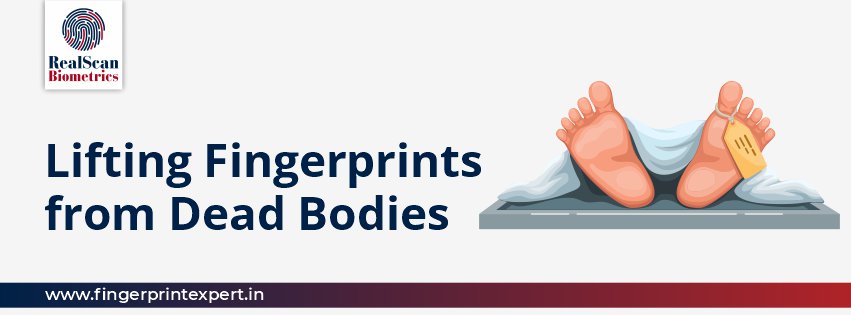Identification of a dead body is an important task in a medico-legal investigation.
A fingerprint is the most widely used identification method.
The method of recording the fingerprint from a dead body is decided by the state in which the dead body is found. In postmortem fingerprinting, there are three different stages of a dead body:
1. Recent Death Stage
2. Rigor Mortis Stage
3. Decomposition Stage
Different techniques of fingerprinting have to be used for every different stage.
Unlike ante-mortem fingerprinting, multiple finger impressions should be recorded for each digit during post-mortem fingerprinting. This has to be done due to the wrinkles and depressions in the skin because of which an optimum quality impression may not be obtained despite reconditioning of the finger.
So, whatever be the methodology being adopted, you must keep in mind that a single fingerprint of anyone digit may not serve the purpose. Combining the information obtained from several imprints of the same finger might help to identify the person.
Stages of a Dead Body
Stage 1- Recent Death Stage
If a body is found within 4 to 7 hours of death, then the external organs, including fingers, are quite flexible. In that case, you can secure fingerprints of the dead body by following methods:
Fingerprint Pad Method
This method is helpful only if the fingers are sufficiently flexible after death. In this method, the fingers are rolled in the inked pad. For this purpose, it is more convenient to use one digit fingerprint pad. The inked finger is then rolled over an appropriate box of the fingerprint card.
Fingerprint Ink Method
If the finger of a dead body is moderately flexible, then the ink method for impression is used. In this method, a drop of fingerprint ink is taken over a spatula and spread it using an ink roller. The spatula is then used to apply ink to the fingertip. A fingerprint card is placed in a fingerprint spoon, the spoon is rolled over the inked finger.
Fingerprint Powder and Tape Method
This method is used when the fingers of a dead body are rigid. In this method, fingerprint powder is applied on the fingertip with the help of a camel hairbrush. Lifting tape is then pressed firmly over the finger and removed and pasted it on the fingerprint card.
Stage 2- Rigor Mortis
If the body is in the rigor mortis state for a long time, the skin of fingers becomes shrunken and wrinkled. In such cases, suitable fluid (hot water, melted paraffin, and oils) must be injected beneath the skin to remove wrinkles and to restore the fingers to their original shape. The needle is inserted about 4-5 mm below the fingertips.
If the dead body has been exposed to a hot climate for a long time, the fingers become very hard and dry.
In that case, we amputate the digits with the help of a bone spine.
The amputated fingers are soaked in an aqueous solution of potassium hydroxide.
Each finger is immersed in a separate vessel, when finger restored their original length, removed it from solution, washed amputated fingers with distilled water, and then soaked in 1% formaldehyde solution. Further the fingerprint techniques can be used for recording the prints.
Stage 3 - Decomposition
The situation where the dead body has started to decay is the most difficult to handle. In such scenario, the pattern-bearing skin of fingertips is peeled off and placed in a solution of formaldehyde.
The person who takes the fingerprints wears gloves and places skin pieces on his own fingers.
Thereafter the rolled fingerprinting is recorded on fingerprinting cards.
In some cases, the tissue may be decomposed so badly, that we injected opaque material (barium sulfate or lead carbonate) into the inner surface of fingers and then identify by X-ray photographs.

 October 04, 2021 - BY RealScan Biometrics
October 04, 2021 - BY RealScan Biometrics
